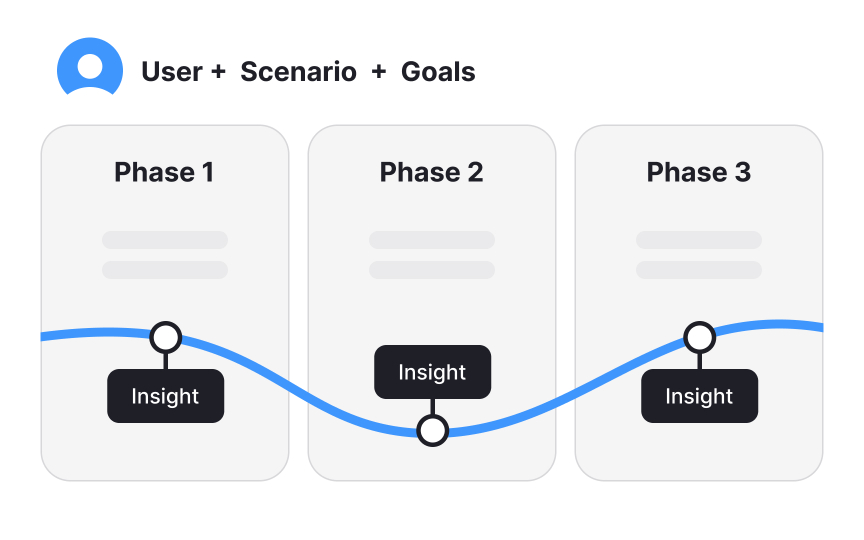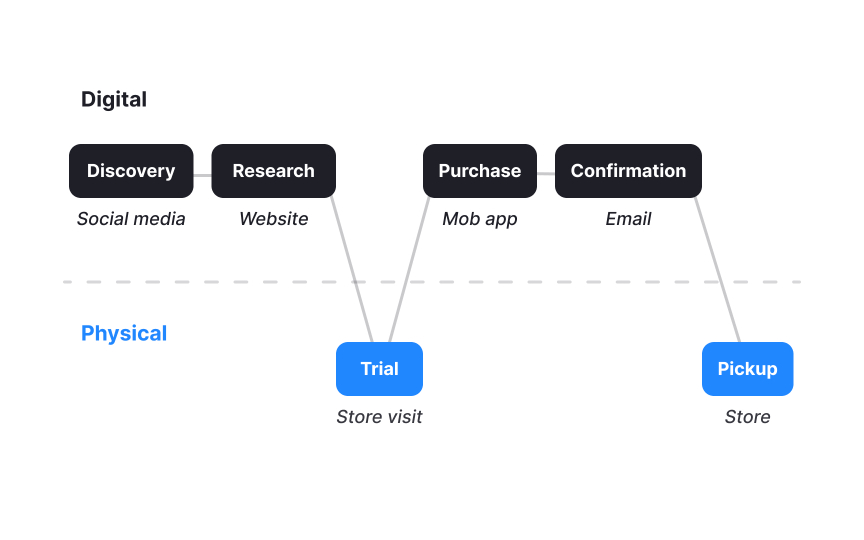What is Journey Mapping?
Build a solid foundation in understanding what journey mapping is and how it captures customer experiences over time
Every customer has a story. Journey mapping captures these stories by visualizing the paths people take when engaging with products and services, revealing the complex reality behind simple interactions. This powerful method transforms scattered touchpoints into a coherent narrative that shows not just what happens, but when, where, and most importantly, how it feels. Born from the recognition that modern experiences rarely follow linear paths, journey mapping embraces the messy reality of how people actually navigate between channels, devices, and contexts. It brings together behavioral data and emotional insights to create a living document that speaks to both analytical minds and empathetic hearts.
The practice turns invisible patterns visible, making abstract experiences concrete enough to discuss, analyze, and improve. By capturing time as a critical dimension, journey maps show how expectations build, satisfaction fluctuates, and relationships evolve through repeated interactions. This foundational understanding opens new ways of seeing familiar problems and discovering opportunities hidden in plain sight.
A
Journey maps share common structural elements. The header identifies who you're mapping and what they're trying to accomplish. The core section breaks down stages of the experience, documenting behaviors, feelings, and thought processes throughout. The footer captures what you've learned: potential improvements, key discoveries, and who's responsible for addressing them.
What makes journey mapping unique is its focus on the customer's perspective rather than internal business processes. It reveals the experience as customers actually live it, not as companies assume it works. This outside-in view exposes gaps between intention and reality.
Customer journey mapping directly drives business growth by revealing where you're losing customers and why. When you visualize the complete
These insights translate into measurable business impact. Companies that map journeys successfully can see an increase in customer satisfaction and significant improvements in retention rates. By understanding where customers struggle, you can prioritize fixes that directly affect your bottom line.[2]
Journey maps also uncover growth opportunities beyond fixing problems. They reveal unmet needs that could become new features, identify moments perfect for upselling, and show where delightful experiences create word-of-mouth marketing. This strategic view transforms
When diverse teams collaborate on
This way, the journey map becomes the shared document that keeps cross-functional teams aligned. When everyone contributes to and speaks the same language, solutions become more cohesive and impactful, and the entire organization moves toward a unified vision of
Modern customer journeys rarely stay within one channel. A customer might discover your product on Instagram,
The key is understanding transitions between touchpoints. Why do customers switch from website to store? What information carries over? What gets lost? These transition moments often hide the biggest friction points and opportunities for seamless experiences.
Effective
Timing your
You can create journey maps when launching new products to anticipate user needs before costly development begins. Journey mapping proves essential during digital transformations or service redesigns. Before overhauling systems, understand current experiences to avoid breaking what works. Maps also help when entering new markets or serving new customer segments, revealing different needs and expectations.
Don't wait for perfect conditions. If teams disagree about customer priorities, if support tickets show recurring themes, or if competitors are winning customers, it's time to map. The best moment is often when stakeholders say "I think customers want..." because journey maps replace assumptions with evidence.
Design and product teams contribute by translating insights into actionable improvements.
While larger organizations might have dedicated
Pro Tip: If someone will need to act on the journey map insights, include them in creating it.
Different situations call for different journey mapping approaches:
- Research-based mapping starts with customer
interviews , observations, and data analysis. This method takes longer but produces maps grounded in reality. Use it when accuracy matters more than speed, especially for high-stakes redesigns. - Assumption-based mapping uses team knowledge to create preliminary maps fast. While less accurate, these maps help identify knowledge gaps and plan
research . - Workshop-based mapping brings stakeholders together to build maps collaboratively. In 1-2 days, teams combine their knowledge to create initial maps. This approach builds buy-in and surfaces assumptions quickly. It's ideal for aligning teams or generating initial hypotheses to test.
Combine methods for best results: start with assumptions, validate through research.
References
- Journey Mapping 101 | Nielsen Norman Group
- Customer Journey Mapping for Business Growth | Oliver West
Topics
From Course
Share
Similar lessons

Types of Journey Maps

Why Journey Mapping Matters



















